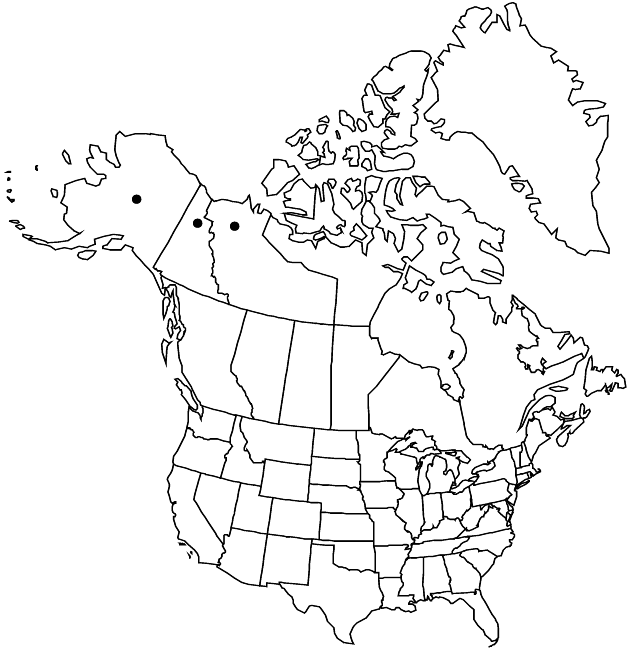Antennaria friesiana subsp. neoalaskana
Canad. J. Bot. 71: 1596. 1993.
Dioecious (staminates and pistillates in equal frequencies in populations). Plants 7.5–14 cm. Stolons 1–4 cm. Cauline leaves 4–20 mm. Heads 2–6. Involucres: staminate 4–6.5 mm; pistillate 7–8 mm. Corollas: staminate 2.5–3 mm; pistillate 3–4.5 mm. Cypselae 1.2–1.8 mm; pappi: staminate 3–4 mm; pistillate 3.5–5 mm. 2n = 56.
Phenology: Flowering summer.
Habitat: Arctic and alpine tundra, on dry rocky outcrops, fell fields, or gravelly frost boils
Elevation: 600–1500 m
Distribution

N.W.T., Yukon, Alaska.
Discussion
Subspecies neoalaskana is dioecious (sexual) and occurs from the eastern Brooks Range, Alaska, to the Richardson Mountains and into the central MacKenzie Mountains, on the Yukon-Northwest Territories boundary (R. J. Bayer 1993). It intergrades somewhat with the other two subspecies of Antennaria friesiana; it can be separated from other arctic members of Antennaria because it is dioecious and has 2–6 heads and well-developed stolons. It is a likely progenitor of the A. alpina complex.
Selected References
None.